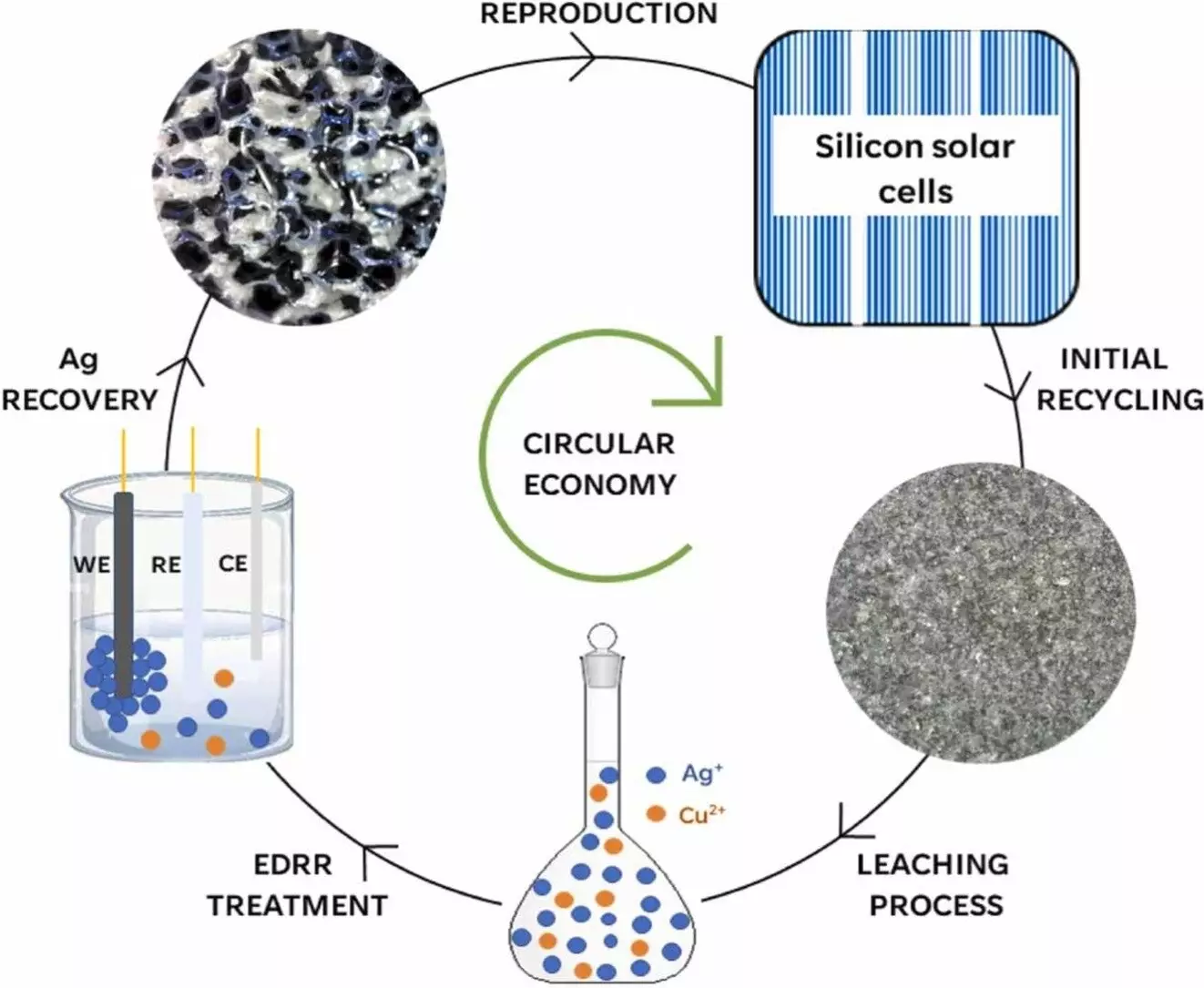With the increasing focus on renewable energy sources to combat climate change, the use of solar panels has become widespread. However, the disposal of these panels once they reach the end of their lifespan poses a significant environmental challenge. One key component of solar panels, silver, has been particularly difficult to recover and recycle due to its complex separation process from other materials like copper.
Recently, a team of researchers based in Italy has made a groundbreaking discovery in the field of solar panel recycling. By utilizing a base-activated persulfate in combination with ammonia, they were able to develop a cost-effective method to extract silver from dead solar panels. This innovative approach involves the persulfate acting as the oxidizing agent, leading to the formation of copper oxide as a protective layer to prevent leaching of copper during the extraction process.
In order to optimize the efficiency of the silver retrieval process, the researchers conducted numerous experiments varying the concentrations of ammonia and potassium persulfate. After careful analysis and experimentation, they determined that a combination of 0.5 M ammonia and 0.2 mol per liter of potassium persulfate, with a reaction time of one hour, resulted in the separation of 85% of the silver in the sample.
Following the initial extraction, the team employed an electrodeposition-redox replacement technique to increase the recovery rate to an impressive 98.7%. This step further solidified the effectiveness of their method in isolating silver particles from the solar panels. The confirmation of silver enrichment was validated through scanning electron microscope imaging, providing concrete evidence of the successful retrieval process.
The development of this innovative approach to retrieve silver from dead solar panels marks a significant advancement in the field of renewable energy technology. By addressing the environmental challenges associated with the disposal of solar panel components, the research team has paved the way for more sustainable practices in the solar energy industry. This breakthrough not only contributes to the efficient recycling of valuable materials but also underscores the importance of continuous innovation in combating climate change.


Leave a Reply